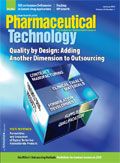A Mass Transfer of Knowledge
A comprehensive book about mass transfer benefits from the author's personal touch.
Jaime Benítez, the author of Principles and Modern Applications of Mass Transfer Operations, has taught this subject in the chemical engineering department of the University of Puerto Rico in Myagüez for some three decades. Before he began work on the first edition, Benítez was determined to write a textbook, not just a text that would be used with students simply because it was the only book to deal with a specialized subject, according to biographical information included in the book. A textbook should be written by an educator who can impart his understanding to others. The author should not only be an expert in the subject, but should also be able to communicate to students the logic of the discipline, its causes and effects, and how it can be applied practically to solve problems.
Benítez's challenges are to present the problem of mass transfer in its full complexity to the novice, to parse the relationships between its components, and to express the subject in the language of mathematics to solve problems. Providing such a chain of logic requires far more than an expert knowledge of the subject, but Benítez is equal to the task. His ability to communicate with the uninitiated is awesome.
For each of the numerous examples he uses to demonstrate mass-transfer applications, he sets forth the problem, provides the necessary data, explains the underlying physical laws, presents relevant experimental references, and indicates the mathematical path to the solution. The text includes too many examples of this approach to generalize, but each instance is impressive in its relevance and practicality.

Principles and Modern Applications of Mass Transfer Operations by Jaime BenÃtez, Wiley, Hoboken, NJ, 2009, 620 pp., ISBN: 0470181788
Benítez states that the methods of mass-transfer operations include such techniques as distillation, gas absorption, adsorption, humidification, liquid extraction, and membrane separations. Benítez incorporates Mathcad, software that expresses problems in mathematical notation and verifies engineering calculations, for example problems and homework. An appendix lists many such programs, which can help solve Maxwell–Stefan equations, perform packed-column calculations, assist sieve-tray design, solve binary distillation problems, and perform multistage crosscurrent extractions.
Mass-transfer operations is not an everyday subject. Even today, it remains largely the province of the chemical engineer. But in this reviewer's opinion, the subject should be a required course in every physical-science curriculum today because it is basic to almost all separation processes. Mass transfer is related to the tendency toward equilibrium that derives from concentration gradients. It involves the transfer of material, or mass, from one homogeneous phase to another. Any arrangement that includes several components in unequal concentrations exhibits mass transfer toward equilibrium (i.e., from the concentrate to the dilute).
The text's breadth of focus is astonishing. It deals with interphase mass transfer and the relevant theories, the material balances, the equilibria, and equilibrium-stage operations. It treats diffusion, diffusion coefficients, and diffusion in solids and liquids. Other subjects covered include the distillation of multicomponents, batch distillations, packed and trayed towers, Fenske's equation, and optimum-reflux ratios. Among many other activities discussed in similar detail are humidification operations, mass transfer in membranes, and sorption processes.
Regarding membrane separation techniques, Benítez discusses such current processes as dialysis, reverse osmosis, microfiltration, and ultrafiltration, as well as gas permeation. This reviewer, as must be apparent, considers this book to be a most worthwhile addition to the technical literature.
Today's students are lucky to have textbooks such as Benítez's for their instruction. Mass-transfer operations were little organized as a discipline in the 1930s and '40s. Scientists formerly used distillation and liquid-extraction techniques, prepared ultrapure water, and purified drugs with membrane processes without sufficient instruction in mass-transfer operations. Only recently has industry realized the importance of the hydrogen bond, understood the reflux ratio in distillations, and appreciated the centrality of surface physics.
Rather than learning by trial and error, today's students have the means to learn the factors and interactions involved in mass-transfer processes, thus gaining confidence and skill. Understanding is the indispensible basis of practice, and Benítez supplies that understanding up front.
Benítez also manages to bring a personal and poetic touch to what could have been a dry discussion of chemical engineering. For example, Benítez's example of mass transfer is "the invigorating aroma of a cup of freshly brewed coffee and the sensuous scent of a delicate perfume both reaching our nostrils from the source by diffusion through the air." The reader cannot help but notice and admire the author's perception.
Through the book's dedication ("To Jaime for being a most special son; your angelic smile is all that is necessary for my happiness."), Benítez reveals his pleasure in dealing with people. His audience, the readers of his text, will be his beneficiaries.
Theodore H. Meltzer is a principal of Capitola Consulting, 8103 Hampden Ln., Bethesda, MD 20814-1244, tel. 301.986.8640, fax 301.986.9085, theodorehmeltzer@hotmail.com. He also is a member of Pharmaceutical Technology's Editorial Advisory Board.

Drug Solutions Podcast: A Closer Look at mRNA in Oncology and Vaccines
April 30th 2024In this episode fo the Drug Solutions Podcast, etherna’s vice-president of Technology and Innovation, Stefaan De Koker, discusses the merits and challenges of using mRNA as the foundation for therapeutics in oncology as well as for vaccines.
Pharmaceutical Tariffs Are Imminent: How Industry is Bracing for Impact
April 16th 2025On April 14, 2025, the Trump Administration launched a national security-driven investigation into pharmaceuticals, a move that will likely result in tariffs being placed on pharmaceutical drugs, ingredients, and other components that are imported from outside of the United States.